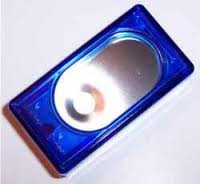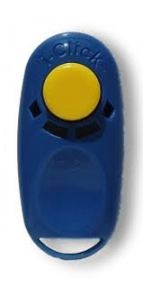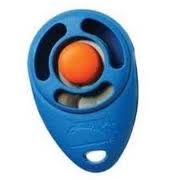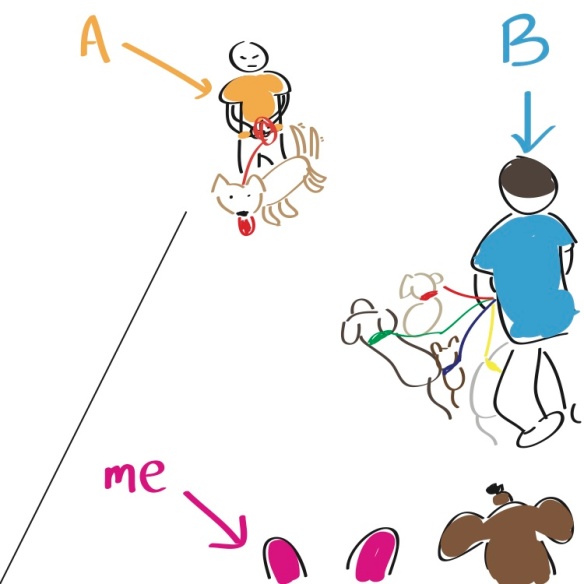Many dog trainers and owners these days use clicker training. The principles of clicker training are rooted in positive reinforcement and the conditioned reinforcer. Clickers can look like this:
 or this:
or this:  or this:
or this: 
and maybe there are others – these are just some i found after a simple google search for “clicker”. They all make the same clicking noise (although the image in the middle is of a i-click which is a bit quieter than the average clicker). The clicking noise is paired with food. We (trainers) like to use high value food – better than the usual milkbone or “low-quality” dog treats that owners freely give to their dogs. We like to use chicken, steak, salmon, etc. The clicker is paired with the food by clicking and then immediately feeding the dog a piece of food. The dog then associates the clicker as a predictor of food so the clicker itself becomes a conditioned reinforcer. Many times when owners just take out the clicker, dogs get excited! They know good things are to come.
Tips on pairing the clicker with food:
- be in a neutral position – don’t make eye contact with the dog and try to vary your body positions. this way, the dog will not associate your body position or eye contact or anything else you may be consistently doing to the food, but just the sound of the clicker.
- always feed immediately after clicking
- the food should be of high value
- this does not take long – no more than 15-20 click/food pairings should be sufficient
Why do we use clickers?
Whenever we want to teach a new behavior to an animal, we want to use positive reinforcement. And usually, the best reinforcer to use is food. We are, in essence, playing a game with the animal. Telling them – if you do this behavior, you will be rewarded with food. However, during training, it is important that the consequence follows immediately after the behavior. For example, if you are teaching the behavior, the organism elicits the behavior, then thirty seconds later you give the food, who knows what happened in those thirty seconds?? The animal may have been doing a totally unrelated behavior and may not make the association between the behavior and the food. Therefore, we use the clicker as a bridging stimulus. It bridges the gap between the behavior and the reinforcer. We are able to click (after some human learning) faster than we can give the animal food. It increases efficiency in animal training.


 or this:
or this:  or this:
or this: 